产品介绍 评论(0)
物种
HumanAccession
P15391-1表达序列
Pro20-Lys291, with C-terminal human IgG Fc
表达宿主
CHO分子量
73-88 kDa(Reducing)
纯度
>95% by SDS-PAGE & SEC-HPLC内毒素含量
<0.1EU/μg标记
Unconjugated标签
Human Fc Tag性状
Lyophilized Powder缓冲体系
PBS, pH7.4, 5% trehalose
溶解方法
Reconstitute at 0.1-1mg/mL according to the size in ultrapure water after rapid centrifugation.
储存条件
· 12 months from date of receipt, lyophilized powder stored at -20 to -80℃.
· 3 months, -20 to -80℃ under sterile conditions after reconstitution.
· 1 week, 2 to 8℃ under sterile conditions after reconstitution.
· Please avoid repeated freeze-thaw cycles.
文献引用
1. Zola H, et al. (2007) CD molecules 2006-human cell differentiation molecules. J Immunol Methods. 318 (1-2): 1-5.
2. Ho IC, et al. (2009) GATA3 and the T-cell lineage: essential functions before and after T-helper-2-cell differentiation. Nat Rev Immunol. 9 (2): 125-35.
3. Matesanz-Isabel J, et al. (2011) New B-cell CD molecules. Immunology Letters.134 (2): 104-12.
4. Carter RH, et al. (1992) CD19: lowering the threshold for antigen receptor stimulation of B lymphocytes. Science. 256 (5053): 105-7.
CD19 is a 95 kDa type-I transmembrane glycoprotein and a member of the immunoglobulin superfamily. It is extensively expressed on B cells during most stages of B-cell differentiation, with expression levels decreasing as B cells terminally differentiate into plasma cells. Genetic mapping places CD19 at the 16p11.2 locus on chromosome 16, where it encodes a 540 amino acid protein. This protein features two extracellular C-type IgSF domains and a large cytoplasmic tail of approximately 240 residues, which shows significant conservation between mice and humans.
CD19 functions as a signal-amplifying coreceptor, with its expression limited to B cells and follicular dendritic cells. It is part of a multimolecular complex on the B cell surface that includes CD21 (complement receptor type 2, CR2), the tetraspanin CD81, and CD225. Through its interaction with CD21, CD19 acts as a signal transducing component for antigens bound by complement. The co-ligation of the B cell receptor (BCR) and the CD19/CD21 complex significantly lowers the activation threshold of B cells by approximately two orders of magnitude.
Recognizing its role in B cell biology, CD19 has emerged as a potential target for monoclonal antibody therapy. Early data have shown its potential in B-cell depletion, presenting an attractive treatment option for autoimmune diseases and malignant B-cell lymphomas. The rationale for CD19 as a target for immunotherapy includes: (1) its expression on the majority of B-cell malignancies; (2) its early expression in the B-cell lineage, preceding even CD20; (3) its efficient internalization in lymphoma tumor models; and (4) its potential involvement in the development of B-cell cancers.
流式分析
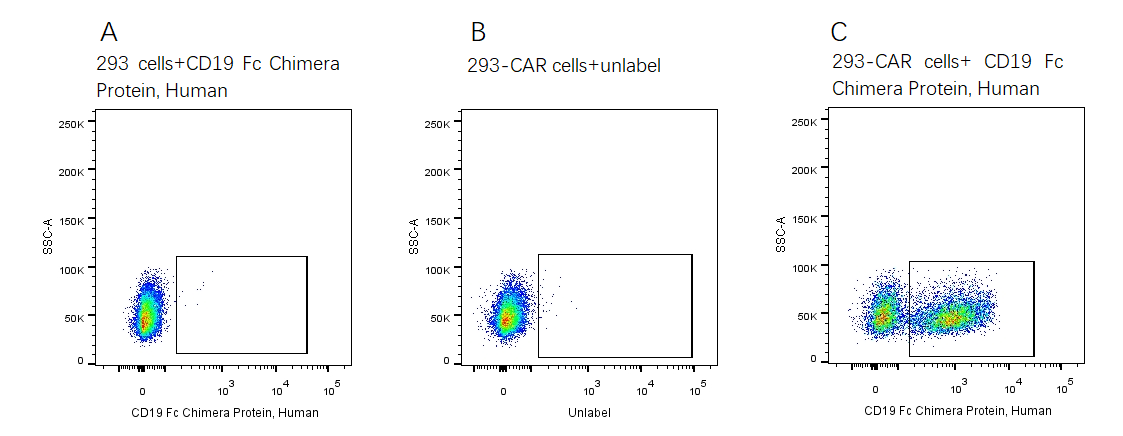
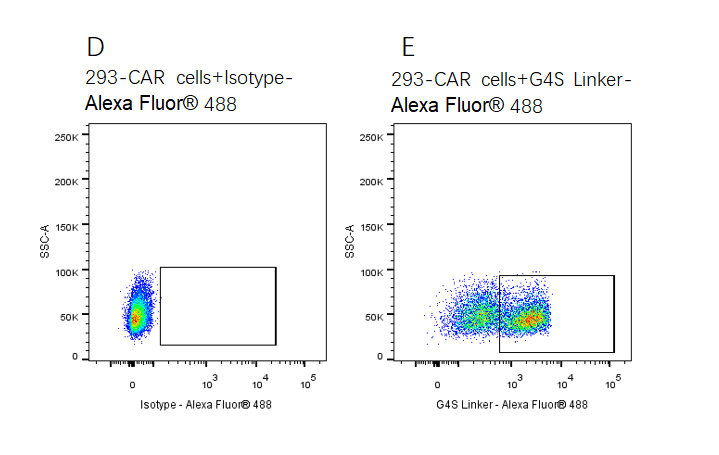
2e5 of transient transfected anti-CD19 ScFv CAR-293 cells were stained with 0.01ug BCMA His Tag Protein, Human, (Cat. No. UA010185) and unlable respectively (Fig. C and B), and non-transfected 293 cells were used as a control (Fig. A). Alexa Fluor 647 signal was used to evaluate the binding activity. 2e5 of transient transfected anti- CD19 ScFv CAR-293 cells were stained with isotype and Whitlow/218 Linker-Alexa Fluor® 488 (Fig. D and E). Alexa Fluor® 488 signal was used to evaluate the binding activity.
电泳JSON
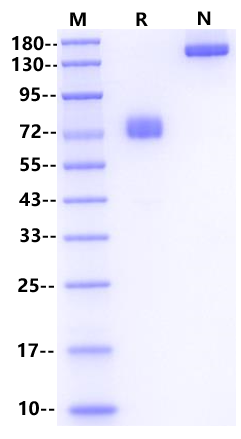
1μg (R: reducing conditions, N: non-reducing conditions)
体积排阻色谱JSON(SEC-HPLC)
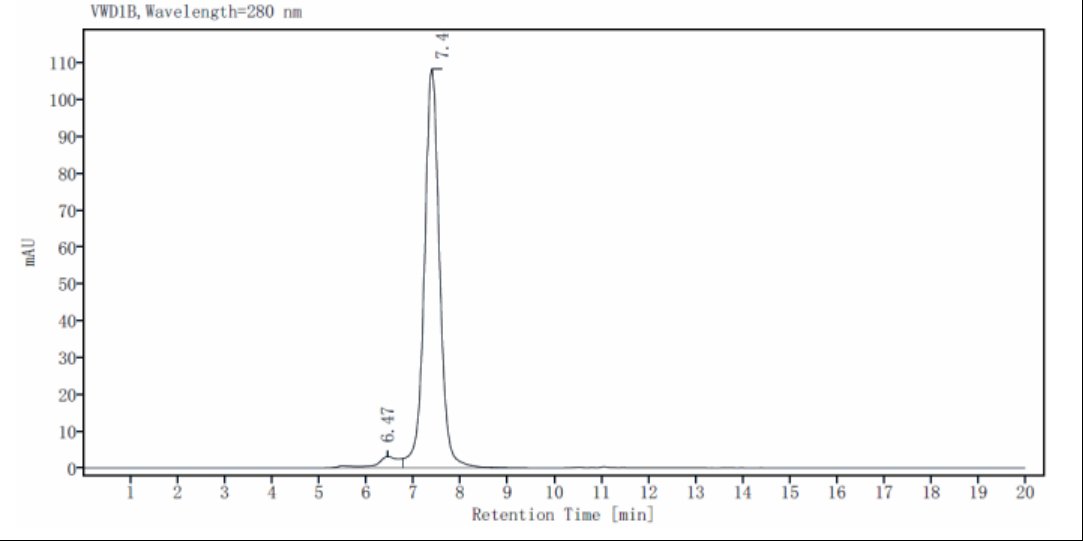
The purity of CD19 Fc Chimera Protein, Human is more than 95% determined by SEC-HPLC.
ELISA
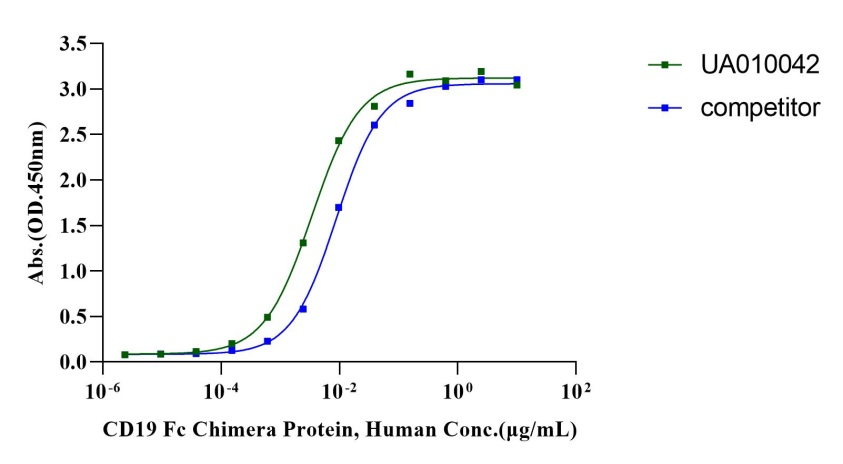
Immobilized FMC63 at 1.0μg/mL (100μL/well) can bind CD19 Fc Chimera Protein, Human (Cat. No. UA010042 ) with EC50 of 2.89-4.07ng/mL, bind CD19 Fc Chimera Protein, Human (competitor) with EC50 of 7.77-10.10ng/mL.
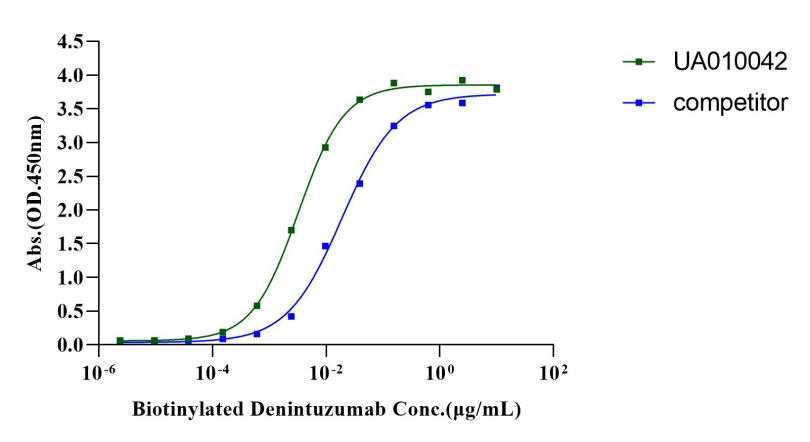
Immobilized CD19 Fc Chimera Protein, Human (Cat. No. UA010042)at 2.0μg/mL (100μL/well) can bind Biotinylated Denintuzumab with EC50 of 2.86-3.66ng/mL.





评论(0)